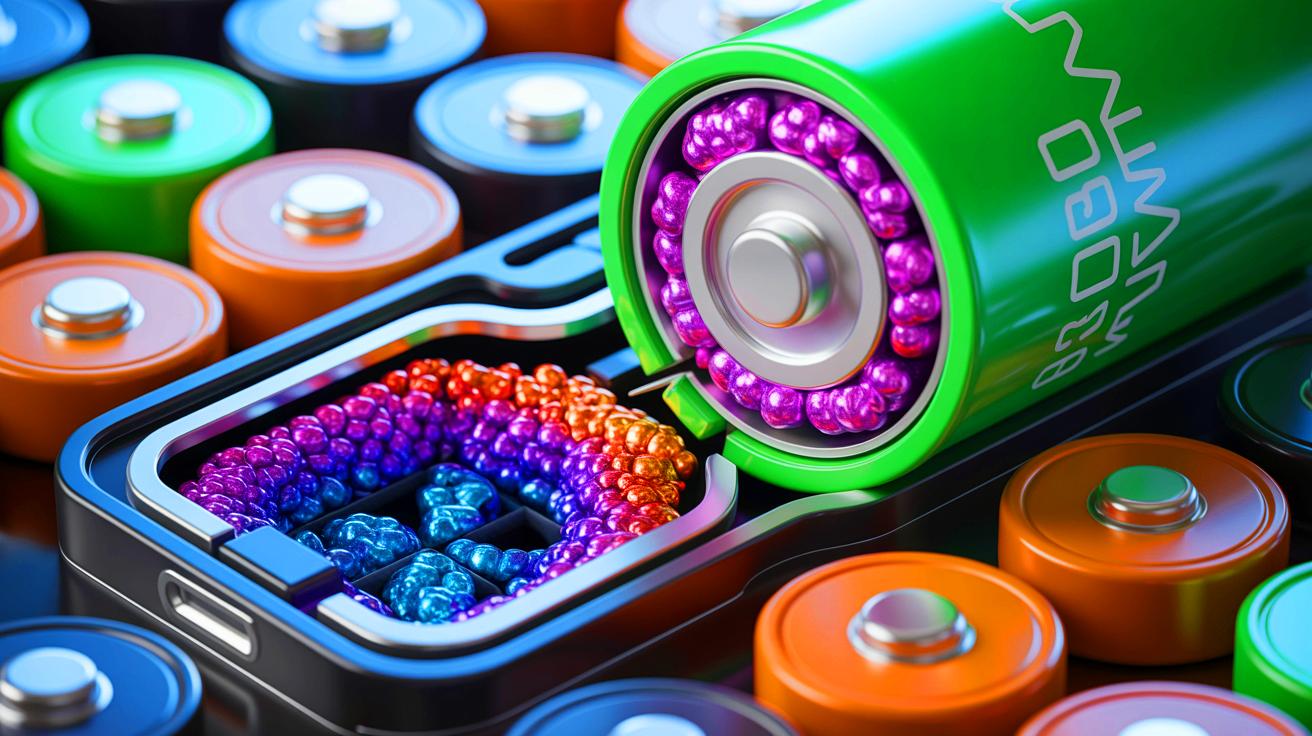- 🔬 Researchers discovered that trace amounts of aluminum contamination disrupt the recycling of lithium batteries by locking metals inside cathodes.
- 🔍 Using advanced techniques, the study showed that aluminum forms ultra-stable bonds, making it difficult to extract nickel, cobalt, and manganese.
- 🚗 The findings emphasize the need for new recycling methods as demand for electric vehicles and renewable energy storage increases.
- ♻️ The research suggests that adapting solvent strategies can boost metal recovery and support sustainable energy goals.
In an era when battery recycling is increasingly essential due to the surge in demand for electric vehicles and renewable energy, a new study from the Hong Kong University of Science and Technology has uncovered a significant challenge: aluminum contamination. This seemingly minor impurity is causing major disruptions at the atomic level, locking critical metals like nickel, cobalt, and manganese inside battery cathodes. The study’s findings suggest that innovations in both battery design and recycling processes are urgently needed to overcome these hidden chemical barriers and improve the efficiency of metal recovery.
Atomic-Level Interference
Researchers have discovered that aluminum, even in trace amounts, infiltrates the cathode structure of lithium batteries. By using high-resolution electron microscopy and density functional theory simulations, the study revealed that aluminum atoms replace cobalt atoms in nickel–cobalt–manganese (NCM) cathodes. This substitution results in ultra-stable aluminum–oxygen bonds, making it difficult for the metals to be extracted during recycling.
The implications of this are significant. Aluminum contamination, once considered a minor inconvenience, is now recognized as a chemical roadblock that fundamentally alters the behavior of NCM materials in recycling systems. As Prof. Tsang, a lead researcher on the study, noted, this discovery demands a new approach to managing impurity pathways in battery-to-battery recovery. This revelation challenges long-standing assumptions and emphasizes the need for a paradigm shift in recycling methodologies.
Solvent Sensitivity and Recycling Challenges
The research also highlights how the effect of aluminum contamination varies depending on the solvents used in the recycling process. For instance, in formic acid, aluminum slows metal release, while in ammonia, it accelerates it. In deep eutectic solvents, the results are unpredictable. This variability underscores the complexity of recycling lithium batteries effectively.
As the demand for efficient recycling systems grows alongside the push for more sustainable energy solutions, the findings raise pertinent questions about the current recycling processes. Mechanical shredding, a common initial step, might be introducing more contamination than previously thought, as even microscopic friction with aluminum foil can release enough material to interfere with metal recovery. This suggests that recyclers may need to adopt new dismantling and processing techniques to limit unwanted material interactions.
Implications for the Battery Industry
The study’s findings have far-reaching implications for the battery industry. By tracking how impurities like aluminum behave and adjusting solvent systems accordingly, recyclers can potentially boost metal recovery rates and reduce waste. This not only supports environmental goals but also aligns with the industry’s broader objectives of clean energy and circular battery design.
Prof. Tsang emphasized that understanding these invisible barriers within used batteries could unlock smarter solutions for battery-to-battery recovery. By reframing what efficient, climate-aligned battery recycling looks like, the industry can move towards more sustainable practices. The research provides a clearer path forward, offering valuable insights that could transform how the industry approaches battery recycling.
Future Directions and Industry Adaptation
The study’s insights offer a roadmap for future innovations in battery recycling. By focusing on how impurities impact recycling processes and tailoring solvent strategies, the industry can develop faster and cleaner recycling systems. This is especially crucial as the need for sustainable energy storage solutions continues to rise.
The research also supports broader goals related to clean energy and circular economy principles. By addressing the challenges posed by aluminum contamination, the industry can enhance its contribution to global sustainability efforts. The study, featured as a back cover study in Advanced Science, highlights the importance of adapting existing processes to overcome hidden chemical barriers and improve recycling efficiency.
As the battery industry grapples with these newfound challenges, the question remains: how will stakeholders adapt their processes to address the invisible barriers posed by aluminum and other impurities? The answers could shape the future of sustainable energy storage and recycling practices worldwide.
This article is based on verified sources and supported by editorial technologies.
Did you like it? 4.7/5 (22)
